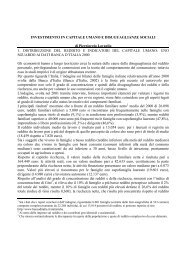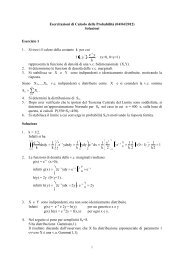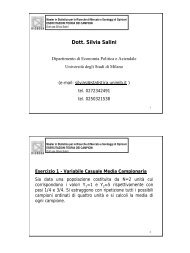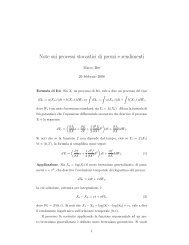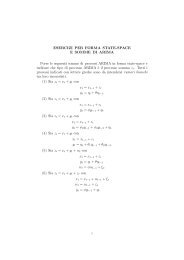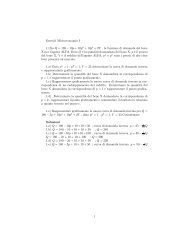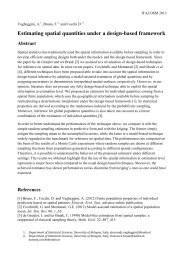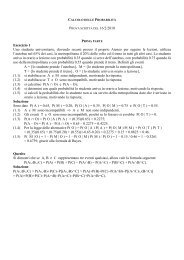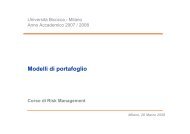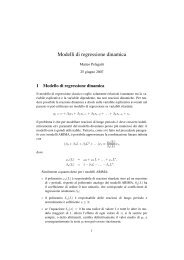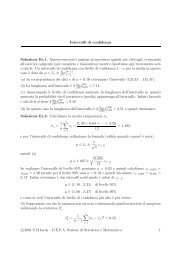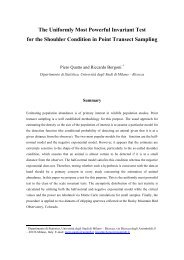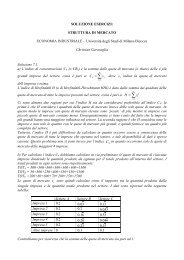Corso di Risk Management
Corso di Risk Management
Corso di Risk Management
Create successful ePaper yourself
Turn your PDF publications into a flip-book with our unique Google optimized e-Paper software.
L’approccio varianze-covarianzeSi ipotizza X t+1 ∼ N d (µ, Σ). Si ipotizza inoltre che laper<strong>di</strong>ta linearizzata sia un’approssimazionesufficientemente accurata della <strong>di</strong>stribuzione <strong>di</strong> per<strong>di</strong>ta.L’operatore <strong>di</strong> per<strong>di</strong>ta linearizzato ha la forma:l ∆ t(x) = −(c t + b ′ tx)per qualche costante c t e qualche vettore b t . Per esempio,nel caso del portafoglio azionario, c t = 0 e b t = w t , i pesidel portafoglio.Poiché una funzione lineare <strong>di</strong> un vettore normalemultivariato ha <strong>di</strong>stribuzione normale univariata, ne segueche la per<strong>di</strong>ta linearizzata L ∆ t+1ha <strong>di</strong>stribuzione normaleunivariata:L ∆ t+1 = l∆ t (X t+1 ) ∼ N(−c t − b ′ tµ, b ′ tΣb t ).Marco Bee<strong>Corso</strong> <strong>di</strong> <strong>Risk</strong> <strong>Management</strong>



